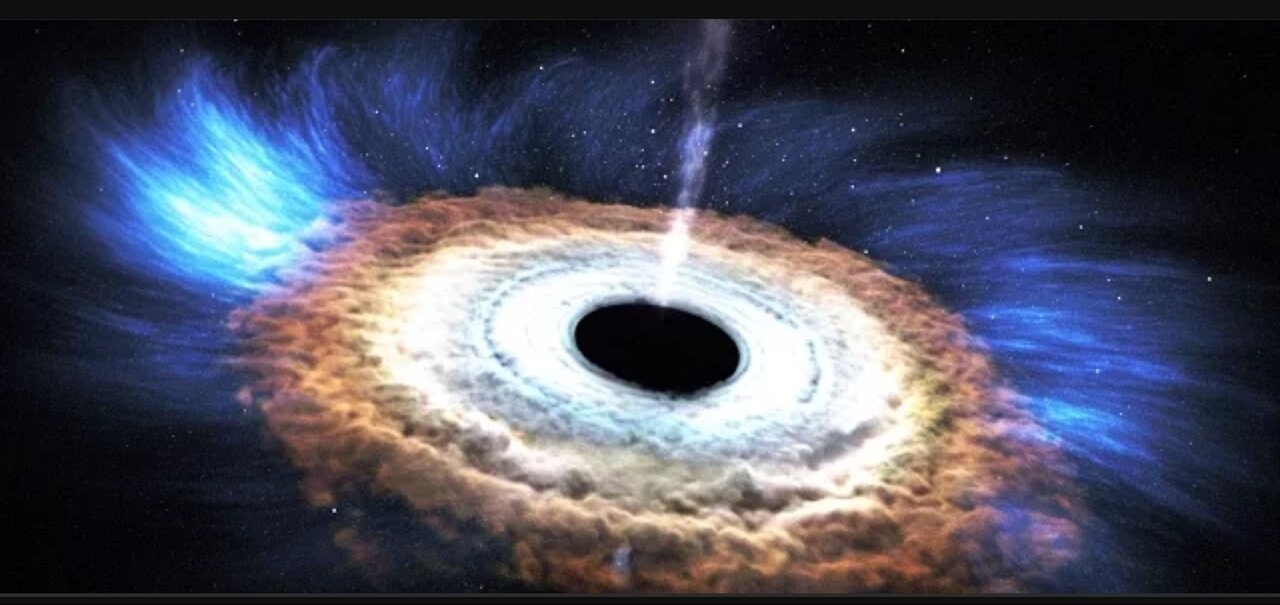Premium Only Content

NASA | Massive Black Hole Shreds Passing Star
You can tell it is fake because you cannot hear music in space.
3:30
I Jumped From Space (World Record Supersonic Freefall)
Red Bull•17M views
0:07
Melanoheliophobia Test
Outfit8 Films•759 views
12:12
SPACE And TIME Don't Actually Exist | Here's Why Scientists Reveal
GetsetflySCIENCE•1.1M views
4:28
Universe Size Comparison | 3d Animation Comparison | Stars Real Scale Comparison
Global Data•25M views
1:00
Galaxy Pictures
NASA Pictures Channel•2.6K views
19:43
Black Holes Explained | They are not what you think they are! | Dhruv Rathee
Dhruv Rathee•8.8M views
4:58
your mind will collapse if you try to imagine this | UNIVERSE SIZE COMPARISON
Estudio Arkano•29M views
21:24
Mystery of Apollo 13 Mission | Lost in Space | Dhruv Rathee
Dhruv Rathee•10M views
5:56
Black Holes Explained – From Birth to Death
Kurzgesagt – In a Nutshell•23M views
2:30
Deep Impact (8/10) Movie CLIP - The Comet Hits Earth (1998) HD
Movieclips•70M views
2:55
[4k, 60 fps] Apollo 16 Lunar Rover "Grand Prix" (1972 April 21, Moon)
Denis Shiryaev•3M views
4:27
SpaceX Falcon Heavy- Elon Musk's Engineering Masterpiece
Spaceflight TV•17M views
Description
NASA | Massive Black Hole Shreds Passing Star
NASA Goddard
18K
Likes
6,294,328
Views
2015
Oct 21
This artist’s rendering illustrates new findings about a star shredded by a black hole. When a star wanders too close to a black hole, intense tidal forces rip the star apart. In these events, called “tidal disruptions,” some of the stellar debris is flung outward at high speed while the rest falls toward the black hole. This causes a distinct X-ray flare that can last for a few years. NASA’s Chandra X-ray Observatory, Swift Gamma-ray Burst Explorer, and ESA/NASA’s XMM-Newton collected different pieces of this astronomical puzzle in a tidal disruption event called ASASSN-14li, which was found in an optical search by the All-Sky Automated Survey for Supernovae (ASAS-SN) in November 2014. The event occurred near a supermassive black hole estimated to weigh a few million times the mass of the sun in the center of PGC 043234, a galaxy that lies about 290 million light-years away. Astronomers hope to find more events like ASASSN-14li to test theoretical models about how black holes affect their environments.
During the tidal disruption event, filaments containing much of the star's mass fall toward the black hole. Eventually these gaseous filaments merge into a smooth, hot disk glowing brightly in X-rays. As the disk forms, its central region heats up tremendously, which drives a flow of material, called a wind, away from the disk.
Music credit: Encompass by Mark Petrie from Killer Tracks.
-
 1:40:30
1:40:30
I_Came_With_Fire_Podcast
12 hours agoPrivate Military Contractors Are TRAFFICKING KIDS Around The United States
13.3K4 -
 LIVE
LIVE
JdaDelete
13 hours ago $0.63 earnedFinal Fantasy VII Rebirth | Jdub's Journey Part 8 - Corel Prison
292 watching -
 2:39:09
2:39:09
LFA TV
18 hours agoTHE ARK ENCOUNTER LIVE EVENT! 7.26.25 9AM EST-12PM EST
191K23 -
 LIVE
LIVE
Sgt Wilky Plays
2 hours agoTherapeutics with Dr Kong
94 watching -
 1:10:23
1:10:23
Man in America
23 hours agoAre MK-Ultra Parasites Rewiring Your Brain? | Detoxing, Peptides & Parasite Warfare w/ Diane Kazer
32.6K49 -
 LIVE
LIVE
TheSchleppy
23 hours ago $0.47 earned✨TheSchleppy✨24HR 2 YRS ON RUMBLE STREAM! RIGHT INTO RUMBLE HALO EVENT!
78 watching -
 3:08:21
3:08:21
JakRazGaming
3 hours agoPlaying Ghost of Tsushima DIRECTOR'S CUT!! on PS5 Stream 6
10.3K1 -
 29:06
29:06
Scary Mysteries
1 day agoThe Corpsewood Manor Murders: Satan, Secrets, and a Savage End
11.9K8 -
 2:08:56
2:08:56
Lara Logan
1 day agoUNHOLY EXPERIMENTS: Justin Goodman Exposes the Evil of Animal Torture | Ep 28
14.8K20 -
 LIVE
LIVE
The Sufari Hub
2 hours ago🔴SUFARI AUGUST SHOWCASE 🔴W CONTENT 🔴 10 SUBS? 🔴WHAT SHALL WE DO THIS COMING MONTH?
22 watching